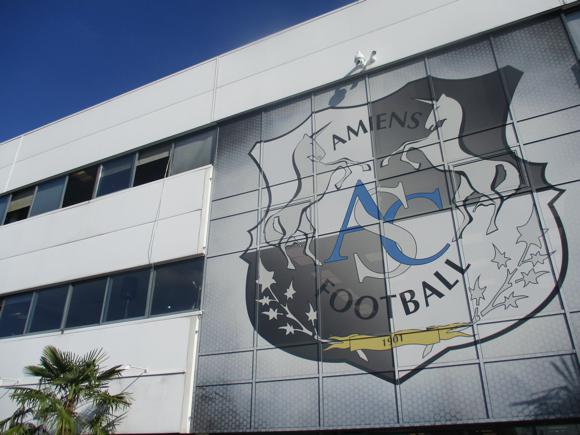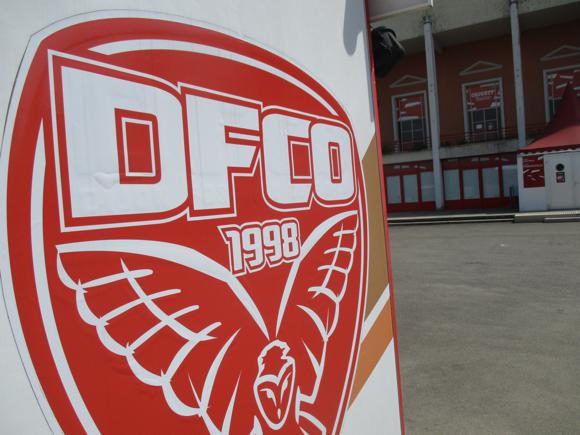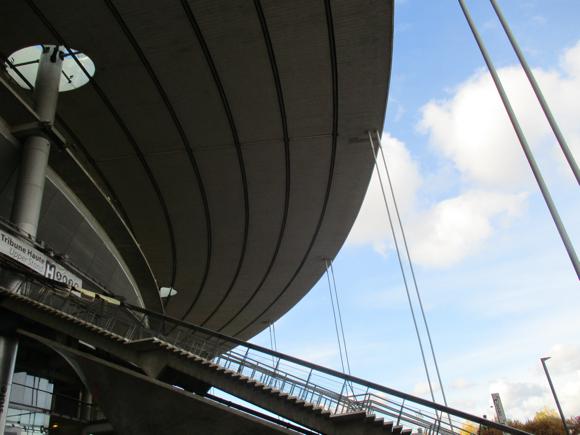A fan’s guide – the club from early doors to today
Surprise title-winners in 2021, Lille Olympique Sporting Club (LOSC) are based at one of the biggest club grounds in France. Double winners with Eden Hazard in 2011, in 2019 Lille finished runners-up behind the billionaires of Paris Saint-Germain.
In 2021, they went one better, and deservedly broke the PSG stranglehold on Ligue 1.
The club was formed in 1944, an amalgamation of Olympique Lillois and Sporting Club de Fives. Olympique had been inaugural French champions in 1933, Fives runners-up in 1934. A midfielder for both that decade, André Cheuva would be the manager to lead newly formed LOSC to a decade of success.

With a talented young forward line featuring Jean Baratte, Roger Vandooren and Jean Lechantre, LOSC made the French Cup final in May 1945, did the double in 1946 and won the cup again in 1947 and 1948.
As captain, Baratte was still around for the cup win of 1953, as was later World Cup hero and Reims star Jean Vincent. His French team-mate at the 1954 tournament André Strappe captained Lille for the 1954 league title and 1955 French Cup win. LOSC then lost their way on and off the pitch, surrendering top-flight and professional status.
Both were regained, before the City of Lille – under mayor Pierre Mauroy – stepped in to become a major shareholder in 1980. By then, LOSC had a new stadium, the Grimonprez-Jooris, sadly unsuitable when the club qualified for the Champions League of 2001-02 with the best defence in Ligue 1.
With European home fixtures moved to Lens, it was obvious that the club needed a long-term solution to their stadium problems.

Film producer Michel Seydoux, club president from 2002, soon created a centre for training and development, and hired coach Claude Puel to find the right blend for the first team. In their six years under Puel, Lille finished league runners-up in 2005 and made the knock-out stages of the Champions League.
In came ex-Lille midfielder Rudi Garcia. Hired as coach in 2008, Garcia was sacked in 2009 but reinstated at Seydoux’s insistence. By 2010, Belgian prodigy Eden Hazard, nurtured by Lille, debuting at 16, was ready to shine in attacking midfield. Locally born Yohan Cabaye, at LOSC when he was 12, was honing his dead-ball skills. Fellow midfielder Rio Mavuba, born stateless on a boat off the coast of Angola, had the drive and personal touch to captain the outfit, spearheaded by prolific Senegalese Moussa Sow and savvy Gervinho, whom Garcia would later take to Roma.
The result was the double of 2010-11, a high-scoring triumph that lifted Hazard, Cabaye, Gervinho and Garcia into the limelight. The three players left for the Premier League, Garcia later for Serie A.

Based at the sports ground of the Stadium Nord, renamed Lille Métropole, LOSC waited while the debate raged over a new stadium.
On-loan Joe Cole helped keep LOSC in a Champions League position before the 50,000-capacity new arena opened for the 2012-13 season, moving Lille onto a higher, international level – though LOSC missed out on a European place that year.
Under coach René Girard, a low-scoring but tight unit spearheaded by ex-Chelsea forward Salomon Kalou made third place by mid-autumn 2013 – and stayed there until May 2014.
After hitting a lull, even flirting with relegation under Marcelo Bielsa, Lille picked up under ex-LOSC defender Christophe Galtier, aided by the prolific Ivorian international Nicolas Pépé. His 22 league goals in 2018-19 pushed the club into second place, well behind PSG but in line for an automatic Champions League berth.
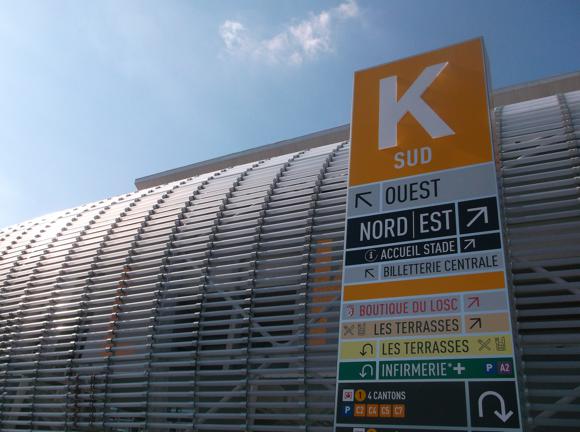
With Arsenal snapping up Pépé for €80 million, Lille could spend €20 on former Bayern star Renato Sanches, still only 22 but in need of a career reboot. Galtier also welcomed bullish veteran striker Burak Yilmaz to Lille, the Turkish international scoring the opener in the 4-0 demolition of Lens in the Derby du Nord early in the 2020-21 campaign.
Galtier’s Lille then put together a string of wins in the new year to top the table with few doubting that previously dominant PSG would overtake them. But, with keeper Mike Maignan in superb form, LOSC gave little away at the back – the final total for the season would be 23 goals conceded and only three losses in 38 games.
The crunch came at the Parc des Princes in April 2021. In a stadium still empty under pandemic restrictions, Canadian international Jonathan David made good on his €30 million transfer the previous August by hitting the only goal of the game, LOSC’s first league victory over PSG since 1996.

Galtier’s men then went the last seven matches unbeaten, picking up five wins, to pip the oil-rich Parisians to the title by one point, giving rise to celebrations way beyond Lille. Two days later, Galtier quit, heading for Nice. Milan snapped up Maignan, and a bereft Lille gave up their title nine places and more than 30 points behind a resurgent PSG.
David’s goals continued to keep LOSC in the hunt, although the most expensive Canadian player of all time failed to spark for his country at the Qatar World Cup in 2022. Another 26 in all competitions in 2023-24 helped defeat Rijeka, Olimpija Ljubljana and Sturm Graz to take Lille to the quarter-finals of the Conference League.
Within three minutes of knocking out Aston Villa at the Stade Pierre Mauroy, LOSC were forced to settle the tie on penalties, predictably irritating gamesmanship from World Cup-winning goalkeeper Emiliano Martínez putting the Villans into the semi-final.



Stadium Guide
The field of dreams – and the story behind it


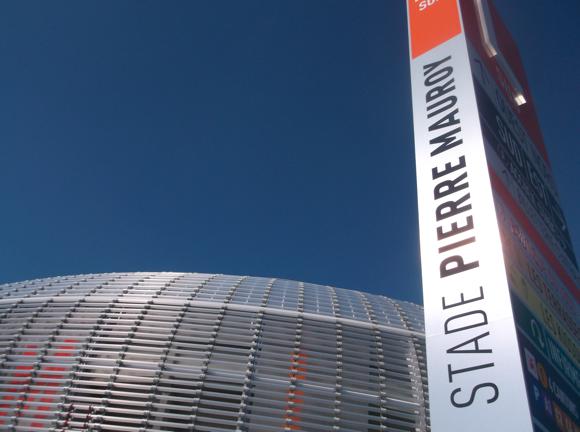
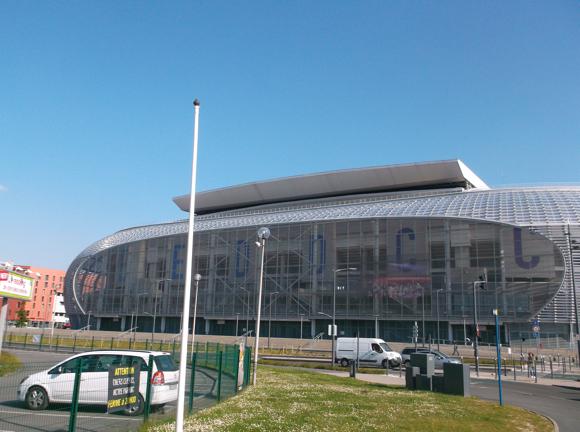

Renamed in honour of the recently departed mayor behind the project, the Stade Pierre-Mauroy was opened in August 2012.
Previously, LOSC and antecedents Olympique and Fives had played at the Stades Henri-Jooris and Jules-Lemaire, before moving into the new stadium of Grimonprez-Jooris in 1975. Proximity to Lille’s historic citadel had prevented the club from being able to expand, and debates between club, engineers, architects, historians and conservations raged for years.
During this time, LOSC moved out to the eastern suburb of Villeneuve d’Ascq, to play at a sports complex initially named the Stadium Nord. As it became obvious that the Grimonprez-Jooris would have to be demolished – a process almost as expensive as expanding it would have been – so a new arena 2km south of the Stadium Nord was planned.
Surrounded by hotels and restaurants, the future Stade Pierre-Mauroy cost €324 million to build, €282 for the stadium, part-funded by the Metropolitan Community of Lille and regional council. Work started in September 2010 and continued for nearly two years.

An energy-saving arena of just over 50,000 capacity, with a retractable roof, the stadium immediately attracted over 30,000 season-ticket holders before its inauguration against Nancy in August 2012 – nearly twice the average crowd at the Stadium Nord the season before.
With the revamping of another Euro 2016 venue, Marseille’s Stade Vélodrome, the Stade Pierre-Mauroy briefly became the largest club ground in France. Able to be quickly adapted to a 29,500-capacity concert arena, the stadium is laid out in two main tiers for LOSC games.
North (gates C-E) along main boulevard de Tournai and South Stands (I-L) are behind each goal, East (F-H) and West (M, N, A, B) the sidelines. Away fans are allocated a sector between gates H and I, in the south-east corner of the stadium.
getting there
Going to the stadium – tips and timings
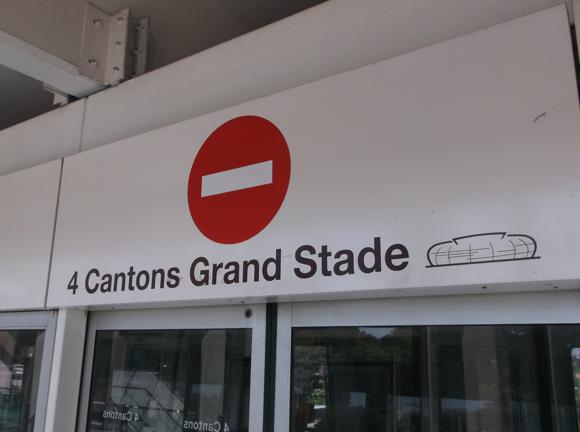
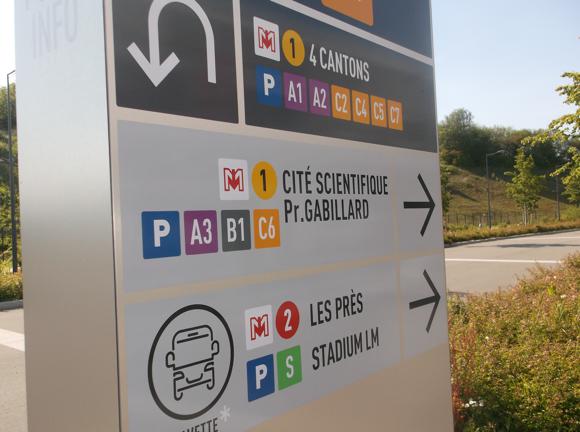

Three metro stops serve the stadium, though none are right next door. The one named after the stadium, 4 Cantons Grand Stade, at the end of the yellow M1 line, is actually the furthest away, a leafy 12min walk through the university complex.
On the same line, one stop nearer to town, Cité Scientifique Pr Gabillard is in the same wooded complex and slightly closer. Two stops away, seven from Gare Lille Flandres, Villeneuve d’Ascq Hôtel de Ville gives access to the nearby shopping centre. The stadium is less than 10mins away.
getting in
Buying tickets – when, where, how and how much
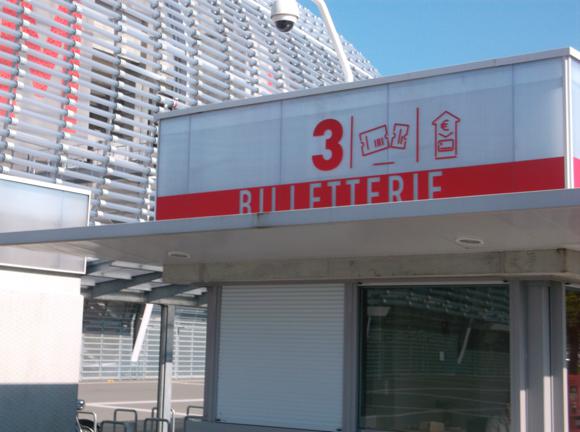

Tickets are on sale in person at the billeterie centrale (Wed & Fri 2pm-7pm, match days) by Gate C on the boulevard de Tournai and at other ticket offices on each corner three hours before kick-off. The LOSC shop in the city centre (38-44 rue Faidherbe, Mon-Sat 10am-7pm) near Lille-Flandres station also contains a ticket office.
The club has an online service while agencies such as France Billet and Ticketmaster distribute through hyper- and supermarkets such as Carrefour and Auchan.
With average gates at 40,000 in a 50,000-capacity stadium, availability is usually only an issue for the visits of PSG and Lens.
Prices begin at under €20 behind the goals, rising to around €50 for a decent seat on the sidelines, depending on the opposition.
what to buy
Shirts, kits, merchandise and gifts


LOSC have a large outlet (Tue-Fri 10.30am-12.30pm, 1.30pm-7pm, Sat 10.30am-7pm) at the stadium by Gate F near the hotels and restaurants, and a city-centre store (38-44 rue Faidherbe, Mon-Sat 10am-7pm) near Lille-Flandres station.
For 2024-25, local sponsors boulanger, an electronic goods company, get their name and logo splashed across the all-red home shirt, the collar white and blue intertwined. Second kit is white offset by patterns of red and blue dots, third-choice purple with orange trim and sponsor’s name.
Stadium tours
Explore the ground inside and out

Infrequent stadium tours (€13, €10 under-18s) are offered to individual visitors by reservation only. See the stadium website for details.
Where to Drink
Pre-match beers for away fans and casual visitors


Of the string of outlets at Les Terrasses on the boulevard de Tournai side of the stadium, northern French chain Beers & Co stocks a range of Belgian brews on draught and by the bottle.
Of the restaurants, Sohourbanfood offers international fare, Paradis 221 sushi and sashimi, while The Factory shows matches on a big screen.
A row of fast-food outlets can be found at the south end of the stadium nearest the university complex.



